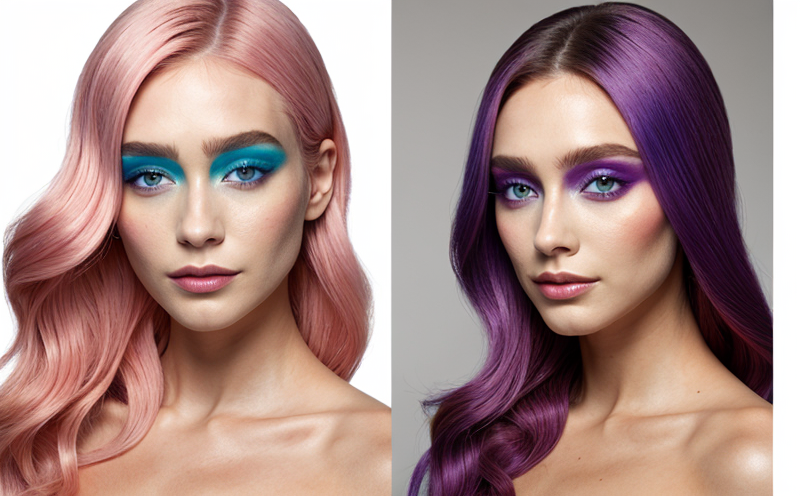In Vitro Eye Irritation Testing in Color Cosmetics
In vitro eye irritation testing is a critical component of cosmetic product development and quality assurance. This methodology focuses on assessing potential ocular irritation caused by color cosmetics, ensuring the safety of consumers while complying with international standards like ISO 10993-10:2018.
Eye irritation tests are conducted in vitro using human corneal epithelial cells (HCECs) or primary rabbit eye models. The latter is a traditional approach, but it has been largely replaced by more ethical and accurate in vitro methods due to the stringent requirements of regulatory bodies such as the European Union's Cosmetics Regulation.
The goal of these tests is to identify potential irritants early in the product development process, allowing companies to address any issues before the products reach the market. This not only ensures consumer safety but also aligns with growing public and industry expectations for ethical practices.
For color cosmetics specifically, this testing is essential because pigments and other ingredients can sometimes cause adverse reactions if used improperly or in high concentrations. The tests help to determine the maximum concentration of a substance that does not cause irritation, ensuring products are safe even when used as directed.
The procedure involves exposing the cell cultures or rabbit eyes to the cosmetic product for a specified period, followed by observation and assessment using standardized criteria. If irritation is detected, further investigation can pinpoint which ingredient(s) might be responsible, facilitating targeted reformulation efforts.
Given the complexity of color cosmetics, where formulations often involve multiple components interacting in various ways, it's crucial to conduct thorough testing at every stage of development. This ensures that not only individual ingredients but also final formulated products undergo rigorous scrutiny for safety and efficacy.
The results from these tests play a pivotal role in shaping product design and formulation strategies. By leveraging this information early on, manufacturers can make informed decisions about ingredient selection, concentration levels, and overall formula adjustments to minimize any risks associated with eye irritation.
Industry Applications
- In vitro testing is widely used in the cosmetic industry for ensuring product safety and compliance with regulatory requirements.
- This method helps manufacturers to identify potential irritants early, thereby reducing costly recalls and enhancing brand reputation.
- The use of this technology also supports sustainability efforts by minimizing reliance on animal testing methods, which are increasingly being phased out globally.
- By incorporating in vitro eye irritation tests into their R&D processes, companies can streamline product development timelines while maintaining high standards of quality and safety.
Customer Impact and Satisfaction
The implementation of in vitro eye irritation testing significantly enhances customer confidence by ensuring that color cosmetics are rigorously evaluated for their potential to cause harm. This approach fosters trust between consumers and brands, as customers can rest assured knowing they are using products that have undergone comprehensive safety assessments.
Additionally, successful outcomes from these tests contribute positively to brand image and market positioning. Brands that demonstrate a commitment to consumer safety often receive higher ratings and better reviews, leading to increased customer loyalty and satisfaction.
Moreover, the use of advanced in vitro testing methods aligns with current trends towards more ethical business practices. This not only benefits consumers but also attracts socially conscious investors and stakeholders, further enhancing overall brand value.
Competitive Advantage and Market Impact
Incorporating in vitro eye irritation testing into the product development cycle offers several strategic advantages for cosmetic manufacturers. Firstly, it enables companies to stay ahead of regulatory changes by ensuring their products meet or exceed all relevant standards.
This proactive approach helps prevent costly delays and potential legal challenges that could arise from non-compliance. Secondly, the ability to identify and address safety concerns early in development can reduce the risk of post-market recalls, protecting both brand reputation and financial stability.
Furthermore, adopting advanced testing technologies demonstrates a company's commitment to innovation and quality, setting it apart from competitors who may still rely on outdated or less effective methods. This strategic investment in cutting-edge technology positions the manufacturer as an industry leader, capable of delivering safe and reliable products that meet evolving consumer expectations.
The market impact of such initiatives extends beyond individual companies; it contributes to a broader shift towards more humane and sustainable practices within the cosmetic industry. By leading this trend, manufacturers contribute to a healthier environment for all stakeholders involved in product development and distribution.





